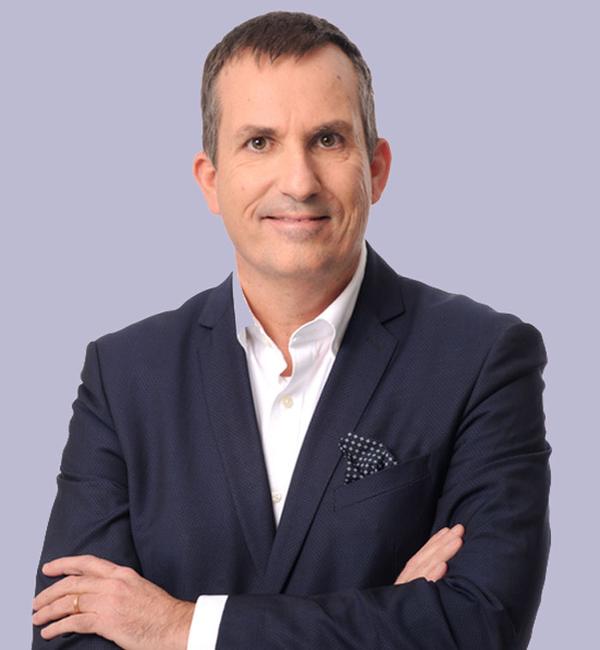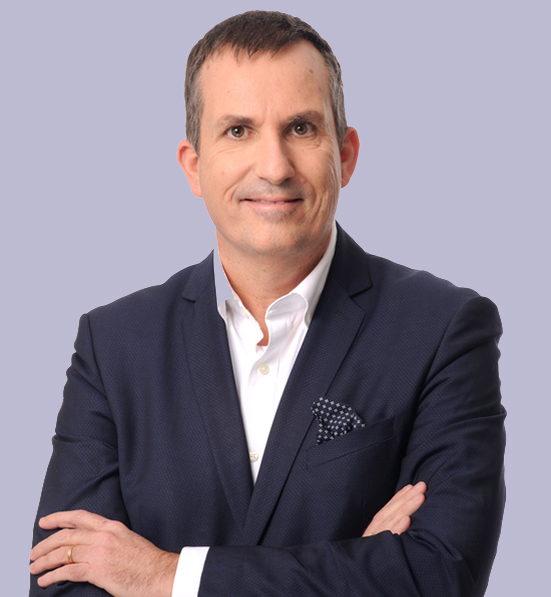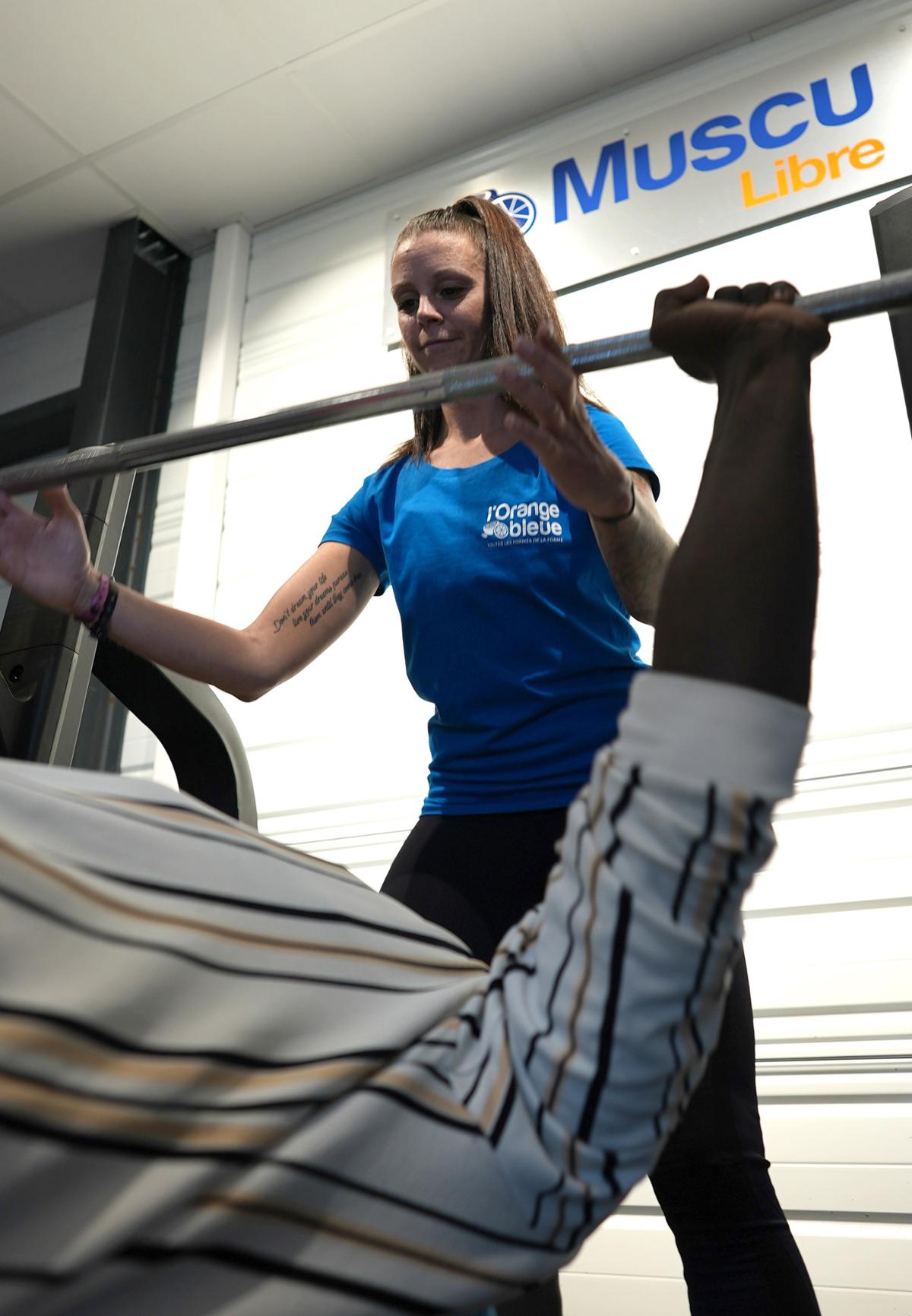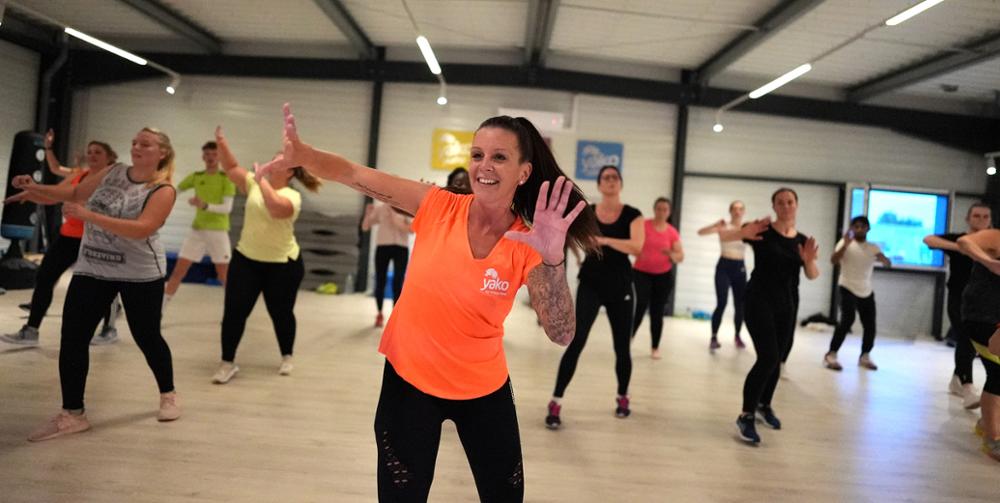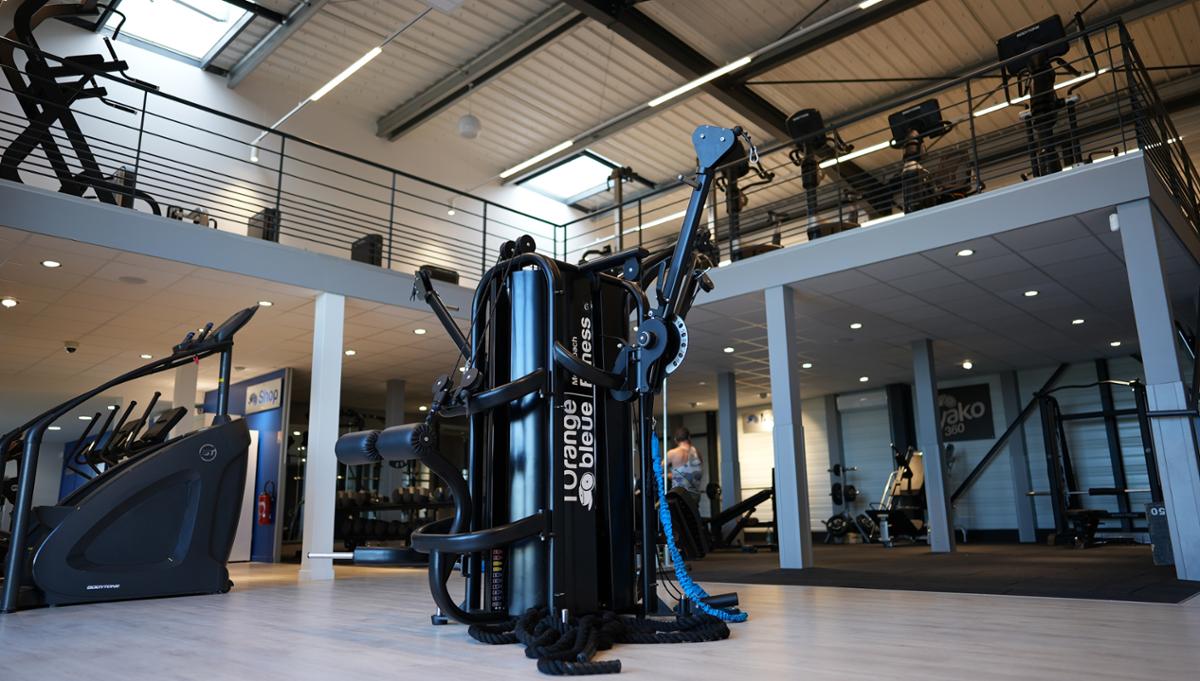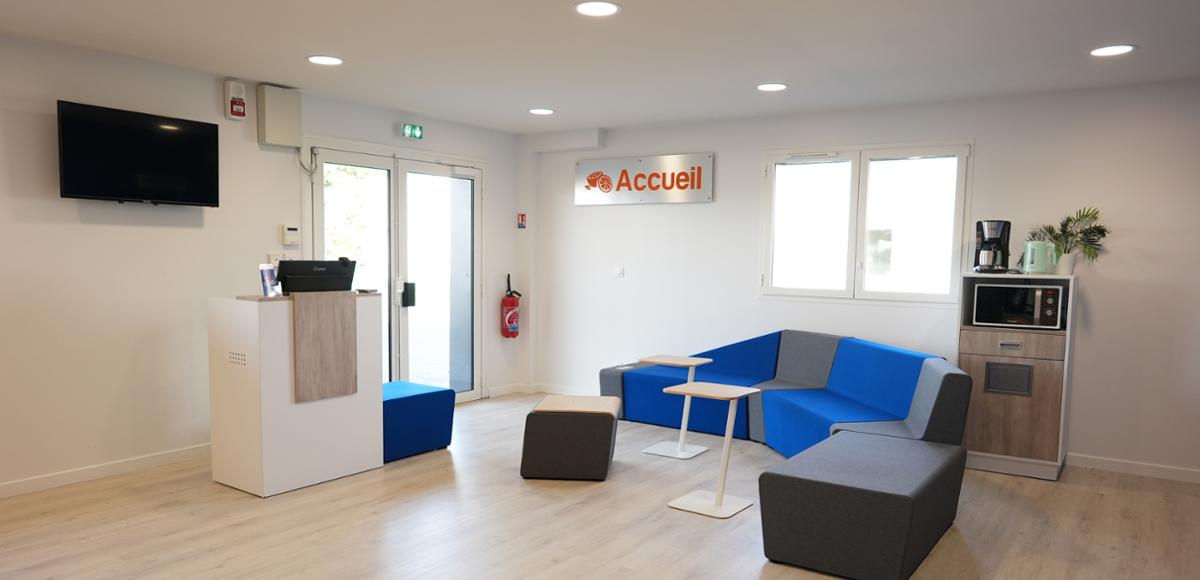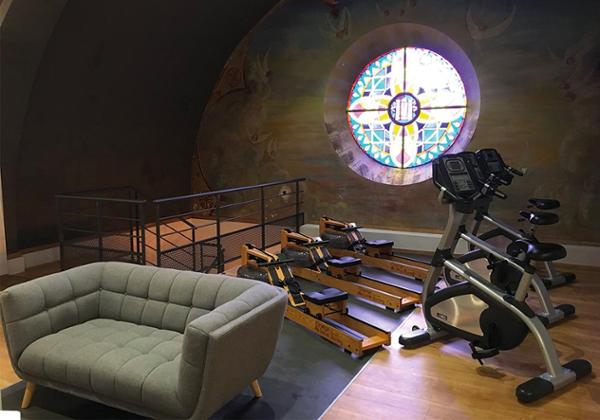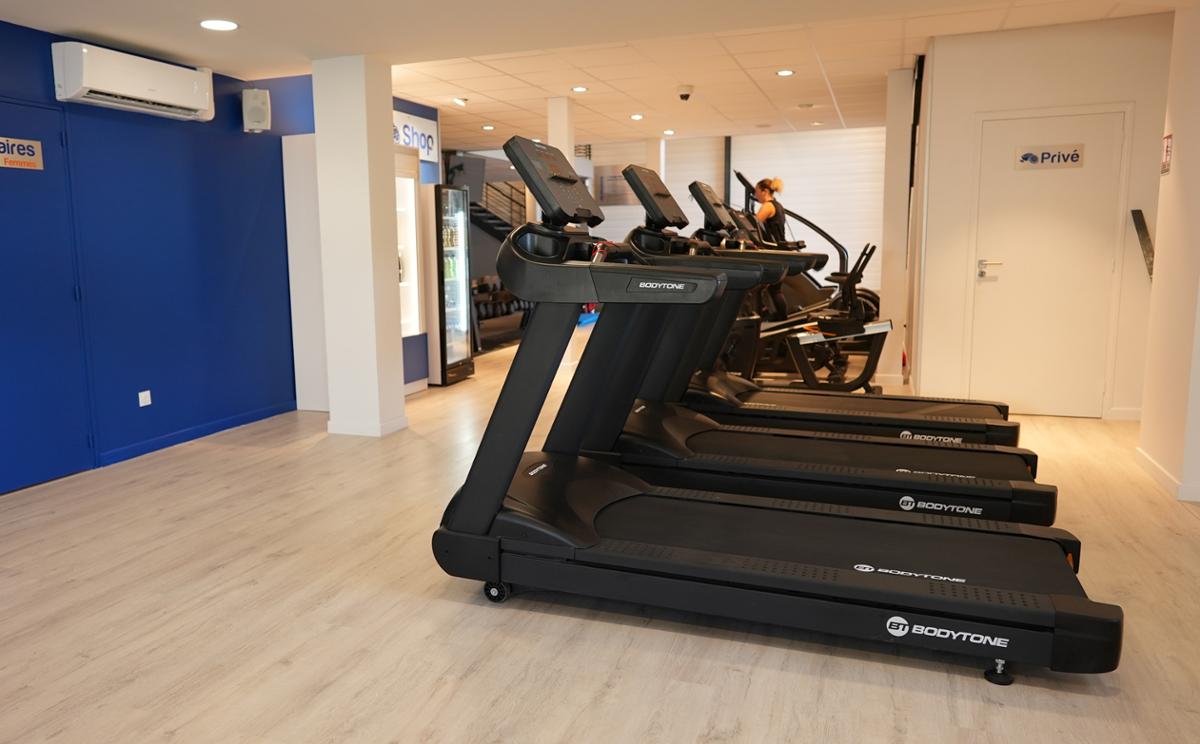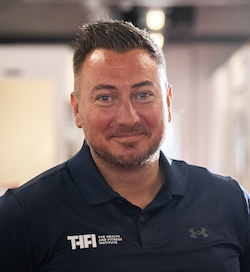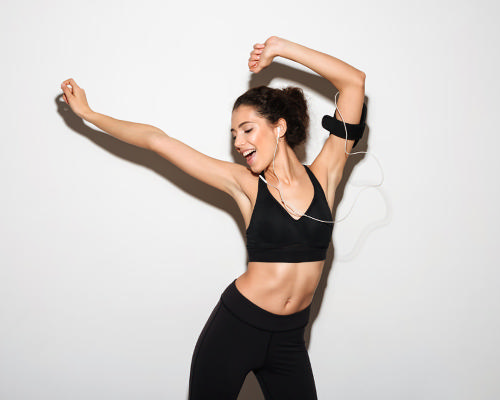Where did it begin?
For most of my career I worked in the retail industry, in fashion, for brands that are well established in France, such as Decathlon, Okadi and Orchestra.
How did you cross paths with l’Orange Bleue?
The fitness industry is completely new to me, but initially my contact was through a meeting with l’Orange Bleue president, Thierry Marquer, who founded the company in 1996.
I had a good feeling about the business, it’s aims and the people who are leading it, including Bertrand Roué, who is one of the shareholders and Axio Capital, the private equity firm that’s been financing the company since 2019.
What made you decide to switch to the fitness industry?
There were three things: one of them is sport. I played basketball for a long time and today I still take part in sport. The second – related to the workings of the organisation – is that they have a team in-house that trains around 100 young people a year.
These young students receive homologated diplomas via a partnership with training body L’École Nationale de la Culture Physique (ENCP). It’s a fantastic programme, because after their training they’re ready for employment. We also train our trainers and coaches – overall around 2,000 people within our organisation a year.
The third major factor was the potential of the company. l’Orange Bleue has around 400 clubs in France and we believe there’s the opportunity to open between 200 and 300 more in this country. We have just three clubs in Spain, but there is huge potential to expand there and go into Italy as well. So that’s a major reason why I joined the company: I’m preparing l’Orange Bleue to expand outside France.
You’re aiming to open 850 clubs in the next five years?
Yes, we have 400 clubs today, and we’re opening between 50 to 100 clubs a year in France. In reality I think the potential is even bigger than that. When you look at the map of France, there are areas where we have very few locations. If our business model works well, we could envisage opening between 200 and 300 in Spain.
Where is the fitness market in its product lifecycle?
What I see is that fitness, compared to retail, is a few years behind. Here in France, as well as in Spain and Italy, there are still a lot of private clubs, with one operator per club. But in the same way that it changed with retail, brands are going to increase their volume and market share.
So you think there will be consolidation?
Yes I do. It happened in Spain while I was working there in 2007. Between 25 and 35 per cent of the retail industry was wholesale. Now wholesale in Spain has a small share of the market.
Will you grow by acquisition or new-build?
It could be that our business model evolves in such a way that we can acquire, however, today, 98 per cent of our clubs are built from scratch. It depends on the country and the opportunity.
Have you done global rollouts before?
I’ve worked with the same business model with other brands in the past, when I opened in more than 30 countries.
I’m here to support the company in changing its mindset ready for international expansion, because from one country to another there are different cultures and languages and sometimes a different way of working.
Did these companies also operate via a franchise model?
They had both, however just to clarify, at l’Orange Bleue we don’t see ourselves working as a ‘franchiser’, in French our model is called a ‘licence de marque’.
How is that different from a franchise?
In the level of engagement and the way of working with partners. It’s also a different approach from a legal point of view. The contract with a partner mainly consists of transferring know-how and giving operational follow up.
What are the financial arrangements?
The entry fee for a licence de marque is around €40,000 and they also have to create their own company to run their clubs.
We have partners running one facility and others with between five and 10 clubs. Around 50 per cent of our partners have more than one. In the future we’d like to have multi-licensee figures of around 70 per cent.
How many clubs do you own directly?
We currently own 17 clubs, the rest are held under a licence de marque.
How do you think the name l’Orange Bleue will travel internationally?
I believe it will work well as an international brand. I’m Spanish and I’ve lived in England and for me, l’Orange Bleu has a French touch.
It is a very strong and unusual brand name – a ‘blue orange’ is very memorable and visual.
You have fitness clubs and then separate wellness clubs, what are the differences?
Fitness and wellness are two different concepts with two very different kinds of clients.
The fitness clubs are 650sq m with 20-30 per cent of the space dedicated to group classes. The wellness clubs much smaller at around 350sq m, allowing more proximity with the client.
They have a spa area with sauna, hammam and contrast bathing as well as some gym machines, but it’s really a completely different type of business from fitness.
Wellness is our new challenge and today we have 11 wellness clubs and I think it’s a niche with huge potential – not a huge volume business like fitness, but we would like to develop this part of the company, and we’re currently working on the business approach and the concept.
Had you considered putting wellness facilities into your fitness concept?
No. It’s two different approaches, two different clients, two different worlds. The market for wellness is between 35- and 55-years-of-age with more women attending than men.
At our fitness clubs the age profile used to be 25- to 35- or 45-years-of-age, now it is 18-30. The mix between men and women is 50-50. I think young people have more confidence to go to the gym and are influenced by social media – you see the stars and influencers doing sports and fitness, it’s a trend.
How did the pandemic impact your business?
From a cash point of view we were in a better position after the lockdowns than before, as the French government helped a lot with subsidies which related well to our size and overheads.
For clubs with bigger spaces and overheads, it was more difficult. We managed to keep about 70 per cent of our members between lockdown and reopening.
Before COVID-19 we had 380,000 members, but after losing 30 per cent, this figure dropped to 266,000. Today we have around the same as pre-COVID, so we have rebuilt the business well.
What’s your membership forecast for 2023?
By 2023, we expect to go beyond 400,000 members across all our sites.
What classes do you offer?
We’ve developed class courses under the brand of Yako within our group, and there are 20-30 different types dedicated to everything from yoga and HIIT to cardio. We don’t offer virtual classes or use screens, we’re very much human-to-human, with our certified coaches running the courses.
Overall our trainers deliver 50 classes each week, and in total we offer almost a million classes each year in our clubs.
Do those with the licence de marque pay extra to deliver these?
The licence for the use of our Yako classes is included in the management fees which they pay on a monthly basis. Every year we change some of the classes and introduce new ones. Yako was launched ten years ago.
l’Orange Bleue recently launched a new look
Yes, we’ve done a design refresh and unveiled the new concept at a big event in Paris recently in front of 300 stakeholders.
We’ve changed everything, including the lighting, changing areas and entrance. It’s like in the retail industry when they change the concept and the image of a store. We’ve taken the concept more upmarket and made the clubs cosier.
Do you now have hundreds of locations that need to be retrofitted?
Some of them, yes, others, no. It depends on the age of the club. This happens in every brand when they refresh the concept – they do it progressively, depending on the needs of the club or store, it’s the same approach.
Our typical refurbishment cycle is five to seven years, but the concept evolves over time as well, so in three years we expect to have all the locations upgraded.
Which club are you most proud of?
Normally our clubs are in retail parks, in the regular box-shape building, but in Rennes we have a very nice new club called La Chappelle. It used to be an old church and we’ve kept the style of the church, even the windows, so it’s very much a flagship location for us.
Is your 2022 goal of €156m attainable?
It is – we have to achieve this turnover.
Tell us about your tech
We’re implementing a new tech platform and by the end of the 2022 we’ll launch a new website and mobile app. The app will offer advice on health, nutrition, exercise – all kinds of different subjects. Members should also be able to use their phone to get into the gym.
However, our added-value – physically speaking – is our proximity with the client and the way we follow-up with them, and we’re aiming to keep that culture of proximity when it comes to how we deliver digital. This is important for us, as it’s the way Thierry Marquer developed the business – to have human impact.
We know 65 per cent of people going to fitness clubs do other activities outside of that. We’ve been figuring out how to keep that connection with clients when they’re away from the clubs and how to engage them with other services we offer.
This is why we’ve relaunched the physical concept and once the digital platform is ready, it will complete our offering, so we’re ready for the next stage of our development.








